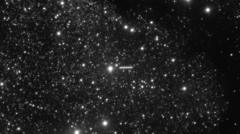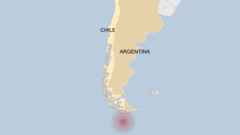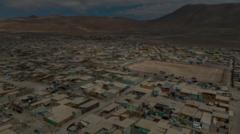This discovery could change our understanding of comet origins and the structure of our galaxy.
Oldest Known Comet? Astronomers Unravel the Mystery of Interstellar Object 3I/ATLAS

Oldest Known Comet? Astronomers Unravel the Mystery of Interstellar Object 3I/ATLAS
Exciting evidence suggests 3I/ATLAS, an object discovered last week, could predate our solar system by billions of years.
A fascinating interstellar object, newly detected by astronomers, has the potential to be the oldest known comet, according to recent findings from a team at the University of Oxford. Dubbed 3I/ATLAS, this enigmatic object may be upwards of three billion years older than our solar system. It is only the third interstellar item recorded making its way through our celestial neighborhood.
The initial observations of 3I/ATLAS were made on July 1, 2025, by the ATLAS survey telescope stationed in Chile, when it was approximately 670 million kilometers away from the Sun. At a recent gathering of the UK's Royal Astronomical Society in Durham, preliminary findings were shared with enthusiasm. "We're all very excited by 3I/ATLAS," noted Oxford astronomer Matthew Hopkins, who had just completed his PhD when the comet was discovered. He believes that it could be over seven billion years old, potentially making it one of the most intriguing interstellar visitors to date.
Hopkins speculates that 3I/ATLAS might have originated in the 'thick disk' of the Milky Way, a region housing ancient stars that revolve above and below the plane where our sun resides. This suggests that the object is predominantly composed of water ice, indicating that as it nears the Sun later this year, solar energy will cause its surface to heat and produce vapor and dust, leading to a spectacular visible tail.
"This is an object from a part of the galaxy we've never seen up close before," remarked Professor Chris Lintott, a co-author of the study. He anticipates at least a two-thirds probability that the comet is indeed older than the solar system and has been adrift in interstellar space for eons.
Later this year, amateur astronomers should be able to catch a glimpse of 3I/ATLAS through telescopes. Before this discovery, only two other interstellar objects had been identified: 1I/'Oumuamua in 2017 and 2I/Borisov in 2019. As excitement builds, astronomers are preparing for the debut of a new, powerful telescope named the Vera C Rubin, set to begin surveying the southern night sky in the upcoming months. This new technology is expected to unveil between five and fifty new interstellar objects.



















